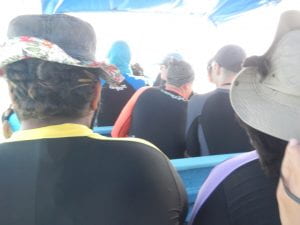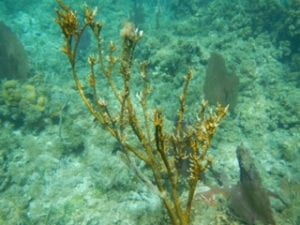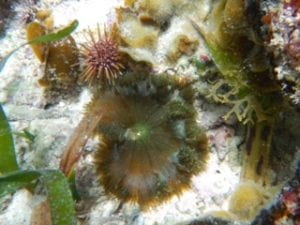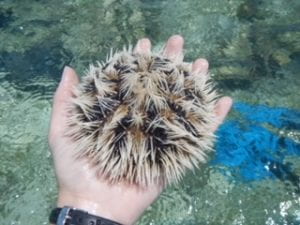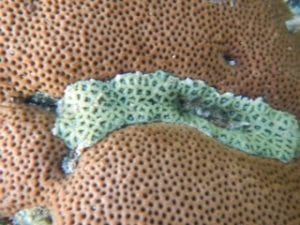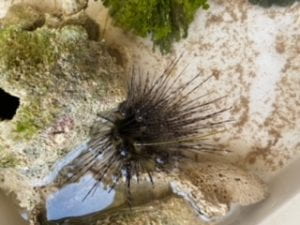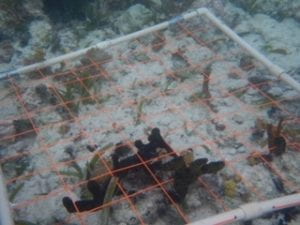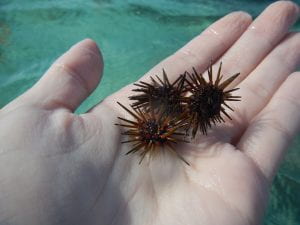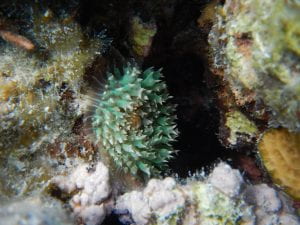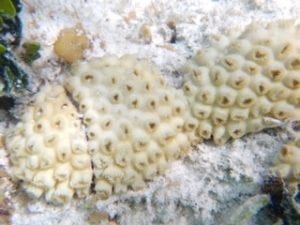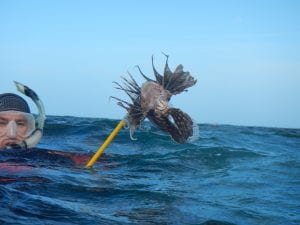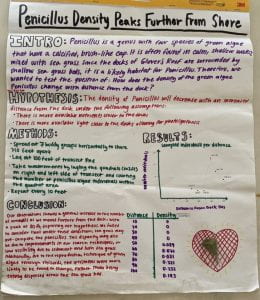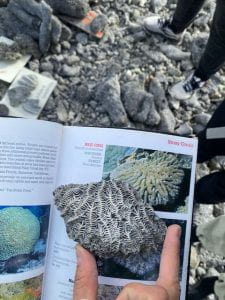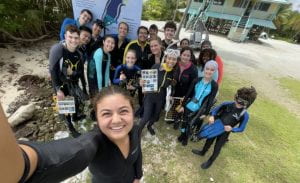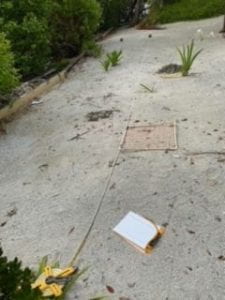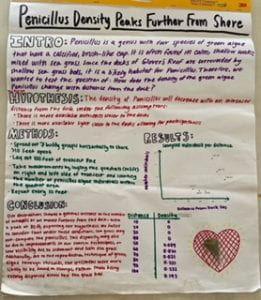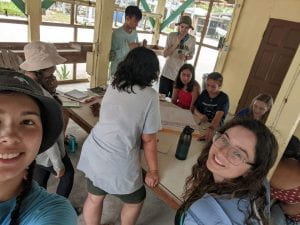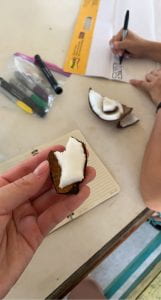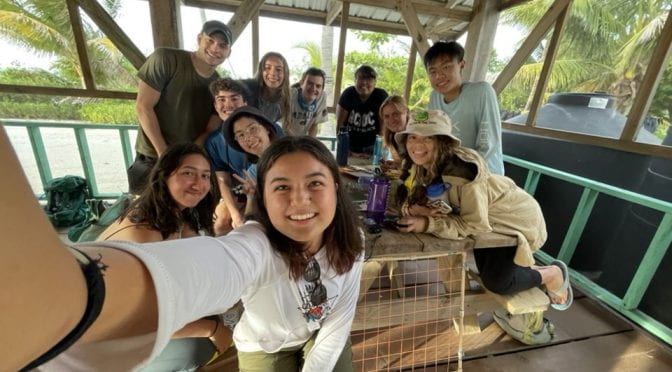Tag Archives: quadrat
urchins upon urchins upon sea eggs
Today, in contrast with yesterday, did start out with urchins! Bright and early in the morning we headed out to a patch reef in the MPA to collect data for our research question. Afterwards, we collected urchins for the urchin hunt, and gathered a whopping 52 urchins at the first patch reef, plus one West Indian Sea Egg that I named Harry. We had three slate pencil urchins and 49 E. virdis urchins. We went to another MPA and collected more data, and more urchins. This time around, we got 57! All of them were E. virdis. I also found another sea egg, which I named Sally. I have faith that the two of them will cross the atoll and find each other eventually 🙂 Overall, it was a great morning for echinoderms (the species including urchins, sea stars, sea cucumbers, etc), as we also came across multiple brittle stars and two sea cucumbers!
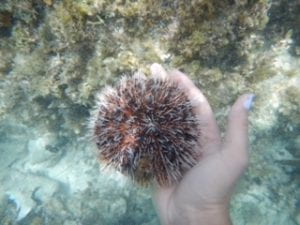
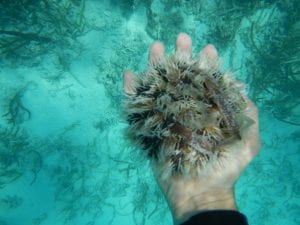
In both MPA patch reefs, I was on the lookout for brown algae. I saw a lot of the saucer leaf algae (turbinaria tricostata) and white scroll algae (padina jamaicensis). I also saw some really cool y-branching algae that had some vibrant blue branches, which I believe to be dictyota menstrualis. Also, I finally figured out what the brown algae clumps were that I couldn’t identify! I believe it to be padina gymnospora, a species related to the white scroll algae. This variety had been covering the reef patch in the MPA that we saw yesterday, so it was nice to figure that out.
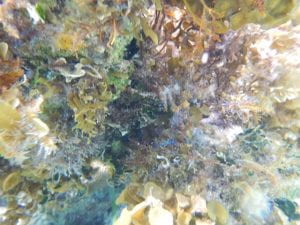
In the afternoon, we went on a “for fun” snorkel in the reef flats. We came across a reef that was mostly algae, but had some sparse coral and lots of fish varieties! We came across three lionfish, but none of them were caught, unfortunately. We did spear one earlier, bringing the current lionfish count to two. Also, fun fact lion fish catching is the only kind of fishing allowed in the conservation zone, since it is an invasive species!
There were also several giant lobsters, yellow jacks, damsel fish, parrot fish, and angel fish! One of the areas was like a fish highway, which was cool to see, in spite of the reef not really being a true coral reef anymore. As I mentioned, the reef area was mostly algal-dominated, and there was rotting sargassum covering a lot of the reef floor. As the sea weed rots, it releases nutrients in the water, which actually promotes more algal growth, rather than coral growth. The fact that there was healthy coral there at all was quite impressive.
But that was about it for today! Tomorrow, we will most likely be either going to the forereef or a non-MPA to do more research, and then we will be doing some sort of land activity. I will let you know tomorrow!
-Elena
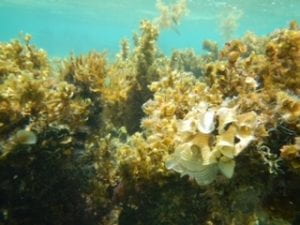
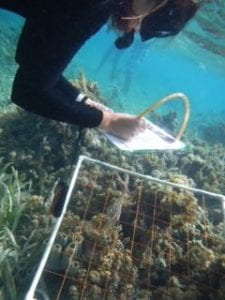
Fire Coral – What Doesn’t Kill You Makes You Stronger (Reef Day 4)
Today is the day that my hand, neck, and snorkel mask tans are so defined that they are becoming obvious. We started the day fast and strong TFB-style by hopping into a boat to collect more data for our coral/urchin experiment in two different MPA patch reefs.
The first MPA reef we went to had the best conditions for data collection by far for me and Liliana. The depth (5-6 ft) was perfect, the current was light, and the non-outrageous amount of sea fans helped tremendously with the quadrats. However, I did encounter a challenge at this location. When I was floating and writing on my clipboard, I drifted into a !!*FIRE CORAL*!! It brushed against my elbows and forearms and caused a burning sting. It wasn’t unbearable and went away after 30 minutes, but I have learned to always be on the watch for these vengeful creatures.
^ This is the culprit coral 🙁
The second MPA location was a little more shallow, so this made data collection harder, but the urchin collection led to so many cool finds. One of which was a new taxa discovery! When turning river pieces of coral rubble in search of urchins, I found a red beaded anemone! I was so excited to find a new anemone, and I got a picture of it (the urchin next to it was shortly collected).
I also got to hold a West Indian sea egg! This hedgehog of the sea was named Sally, and she was very adorable and spiny.
Later in the day, we went on a swim just for fun on the lagoon side of the reef crest. This was anemone haven! I saw so many Giant Caribbean anemones; sadly, some of them were bleached. On a happier note, I also got a new taxa sighting here! Encrusted on the side of a mound coral, I found a mat zoanthid colony! The tiny polyps (<1cm) were blue/green and curled up into domes when disturbed. Yay zoanthids!
After dinner, we listened to two guest lectures from the Belize Fisheries Department and Belize Coast Guard. I have so much respect for all that is being done to protect and conserve the ocean and its resources.
Today was extremely productive to the point where I am struggling to finish writing this blog. I look forward to going to bed and having my recurring dream (only started a few days ago for some reason) of going snorkeling and turning into a mermaid. Maybe my dream behind-the-scenes is super inspired by mermaid Ruth!
– McKenna
Reef Day 3: Lionfish = Speared
We started today with an experiment! We spent time forming a question, hypothesis, and methodology regarding percent coral coverage (live v. dead) and sea urchin abundance in MPA and non-MPA patch reefs. In the time we had before lunch and before we went out onto the boats, we did a taxa collecting activity, where we waded in shallow water and collected tons of organisms and specimens.
Once back in the wet lab, we organized them all into tubs and presented our “expert” taxon group. One cool find of note was a Diadema annularis sea urchin (DO NOT TOUCH).
After lunch, we headed out on a boat (!!) to perform our experiment (at least getting it started). We went to West Reef (non-MPA) with our transects and quadrats. After collecting data on corals, we had a timed urchin-collection period. I found three!
We went to a second patch reef (MPA) to explore just for fun for the sake of curiosity. Such an amazing experience! I spotted a cyan-colored (WOW!!) corallimorph and a white encrusting zoanthid (oooooo)! I finally added some variation in my spotting of my taxa.
The highlight of the day was Dr. Solomon SPEARING a lionfish and capturing it! (This is a good thing because lionfish are an invasive species in the Caribbean)
This was probably the coolest thing I’ve ever witnessed, and I know that my reef buddy Liliana (who has a passion for one day eating a lionfish) was beyond thrilled!
This experiment will be continued over at least the next day to collect more data on different patch reefs, and then I will have another picture of a poster to attach in my blog.
Here comes another night of much-needed sleep, with a slightly higher chance of having lionfish for breakfast tomorrow 🙂
– McKenna
today powered by coconut
Today was a big day. I know you were all waiting in suspense after the cliff-hanger ending to yesterday’s blog post. Well, wait no more.
We started out the day by practicing using out quadrats (which are actually 2×2 feet-oops!). We had to come up with a scientific question that we could answer by using the quadrat. Sophia and I chose to ask what percentage of the sand is occupied by live foliage. We laid out 30 feet of transect tape, then placed the quadrat on either side every five feet, and counted the number of squares that contained a live plant. The answer we came up with was 22.7%.
The next step was to figure out a scientific question that we could answer with the quadrat in the reef, collect data, and present our findings to the professors. You can read all about it below!
Also, I must note that throughout our scientific process we were being supplied fresh coconut by the kids. #sponsored
After that, we went on a walk to the coral graveyard-Professor Correa’s favorite place in the world! It looked like a beach full of gray rocks, but upon further inspection, it turned out to be fossilized corals! We were able to identify the corals based on the shape of the calyxes (the little spot that the coral polyp inhabits). In live coral, the skeleton is covered by the tissue, so in these fossils, we could easily see the identifying markers. Some of the fossils belonged to corals that have been nearly wiped out by disease and are rarely seen in nature, so the coral graveyard was truly a special place.
I also saw some sargassum that had washed up on the shore of the coral graveyard. I think it was sargassum natans VIII, but it was hard to tell because most of it was dead. There were also some floating sargassum patches out at sea, which was cool because there aren’t any that I have seen within the lagoon.
We then came back to watch the presentations for the night. I delivered mine on nutrient pollution, overfishing, and the future of the coral reefs.
And that was it! Tomorrow we are looking to go further out via boat to see new reefs, weather allowing of course. Stay tuned!
-Elena
ps. happy graduation to my brother! (although I doubt he’s reading this)
Quadrats + Coral Graveyard
I felt like such a tropical field biologist today (with training wheels of course). We started off the day with a land activity using transects and the quadrats that we made yesterday. Liliana and I got some practice using the gear and with the methodology by gathering data to characterize what percentage of the measured area had evidence of hermit crab movement through the sand. Here is a photo! (The square is the quadrat, the line is the transect, and the orange rectangle is a very fancy dive clipboard)
Then, all of the TFBs put our heads together and came up with a question to test with this procedure out in the seagrass beds. We chose to investigate how the density of penicillus (a green algae) changes with the distance from the shore. We decided on a uniform methodology and got to work! I saw a lot of warty corallimorphs and great Caribbean sea anemones in the seagrass beds! After we collected our data in the water, we came back to the wet lab and compiled our data. We all made a poster that reflected the entire experiment, including results, discussion, and figures (one of which is a taped-on penicillus in a quadrat heart).
While working in the wet lab, I ate some freshly husked coconut as a snack!
Later in the day, we went to what Adrienne called the “coral graveyard,” and which she also described as “the most amazing place on the planet.” It really was amazing! The field of coral skeleton rubble was extremely well-preserved, and we were able to identify a lot of the species! One thing that I was particularly excited about was seeing and correctly identifying Montastraea cavernosa fragments. I took Adrienne’s coral reef ecosystems class, and my semester-long research proposal centered around this coral. It was so gratifying to get to hold a piece of its skeleton framework!
Besides the few sightings I got in during our penicillus data collection, I didn’t have a lot of time or opportunities to focus on my taxonomic group today. However, I am now so much better at recognizing great Caribbean anemones and warty corallimorphs!
Although my collection of mosquito bites has grown to be rather impressive, I can’t wait to get more if that means I can have more days like this!
– McKenna
What Lies Beyond the Mangroves of Death??? (Day 2)
Hi all, it’s Faith with Day 2 updates from the Belize trip!!!
Today we woke up and hit the ground running. We had delicious banana pancakes that reminded me of the ones I make back home, and then some Black Iguanas, Ctenosaura similis, watched us prep for out first snorkel.
For our first snorkel, we saw lots of patch reefs, soft corals, hard corals, and many reef fish. From this dive, my favorite thing was the Christmas tree worms that we found burrowed in brain coral. We had lots of fun watching them pop in and out of their burrows. Our dive safety expert, Ruth, also let us hold a Queen Conch Snail!!! Some other interesting finds were pufferfish, a corallamorph, a yellow stingray, and lionfish. I was disappointed that I didn’t see my taxa, but that disappointment dissipated when we started our next activity– quadrats.
What is a quadrat you ask? Well, it is a “handy tool you can use for many things.” I’m not actually sure what it does yet, but it is a square PBC pipe tool with a grid-square net inside. And you’ve got to “belieze” the hype that comes with constructing your own quadrat. It truly makes you a marine biologist.
After lunch, we grabbed our clipboards and “willingly” (100% not persuaded by the kids) voted to go into the M.O.D. With our clipboards and fins in hand, all 18 of us RAN through seemingly endless mangroves with swarms and swarms and swarms of mosquitos to our watery safehaven. I got lucky and made it through with maybe 10 or so bites, but many have it much, much worse.
But the buggy adventure was worth it. My partner Maegan and I attempted to complete the scavenger hunt on our clipboards, but we got sidetracked searching for our taxa. Again, I was distraught over the lack of echinoderms until I saw a broken sea biscuit (Genus Clypeasteroida). I knew that if their were empty sea urchin skeletons, then there were live ones somewhere nearby! I ended up seeing two live Sea biscuits, but many more calcite skeletons… (there were rumors of brittle stars and donkey dung sea cucumbers but I didn’t see them). The sea biscuits were not doing too much, they were sitting on their own or under coral.
Then the time came for us to stop swimming around the reef and run through the mangroves (or so we thought). In reality, we ended up snorkeling back to the wet lab. Our dive back featured another stingray, a nurse shark, and fire sponges growing in the seagrass beds. I also found a plastic bottle with a crab inside! (Don’t worry, I recycled the bottle).
No lizards to report today except for a brown anole Anolis sagrei and of course the previously mentioned iguanas!!! Til’ tomorrow!!!
Quote(s) of the day:
“Vote mangroves and we won’t send the crabs into your rooms tonight”
*Pointing at a dead Sea Biscuit* “It’s a fossilized sea star!!!”
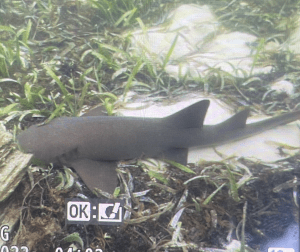
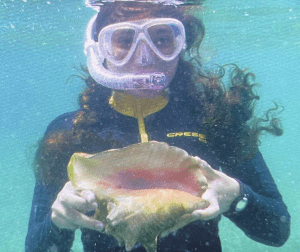
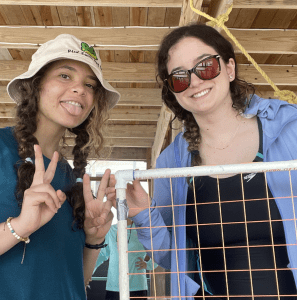
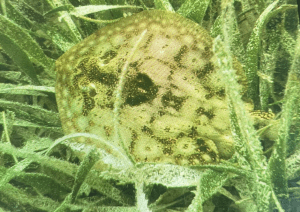
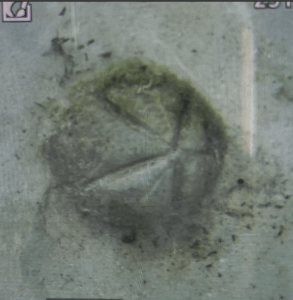
The First of Many (quadrats)
May 23rd, 2019
So surprise, I figured out that I’m used to having breakfast at 6:00 am (we did most days at Las Cuevas) because I woke up at 6:34 and had a mini heart attack thinking that I was 34 minutes late to breakfast. After my initial panic, I got up for a good breakfast and we started the day in the classroom explaining transect techniques to use when underwater in conjunction with the quadrat (square grid made of pbc pipe and string). To practice, we went to a apart of the island that was littered with dead coral amongst other things, and tallied up the amount of coral vs. other.
After lunch, and waiting for the wind to calm down, we went into the water and swam to nearby seagrass beds to see if we could quantify community changes using quadrats. This involved counting the seagrass, algae, and neither. Once done, the group was asked if we wanted to swim to a patch reef so of course I immediately said yes. Upon approaching the reef, our instructor pointed out a brown Nurse Shark laying under an overhang. After snorkeling around for a but, I began to see some herbivorous fish. I saw a brown Ocean Surgeonfish swimming amongst the coral heads and a bright yellow, juvenile Three Spotted Damselfish, it has single spots on its dorsal, caudal, and tail fins. It looked like it was picking at some algae and seemed to stay on that coral head, which could mean it was tending to an algal garden although this is usually done by adults. It could have just been eating the algae.

We ended the day with presentations on echinoderms (sea stars, brittle stars, sea urchins, and sea cucumbers), red and green algae, and an overview of mangroves and their importance to coral reefs.
Quadrats, not quadrants!
Day 1 of Beach Days, 5/23.
My day began in the savanna cabanas of the tropical education center and it is about to end in a hammock on the Middle Caye of Glover’s Atoll. The view has changed drastically. Compared to the 100 meter visibility in the savanna, my view here at Glover’s is only cut short by the horizons. In this grand view, I see faraway lightning that may be associated with a brewing tropical storm. But because it is likely more than hundreds of miles away, I cannot hear the thunder.
This is our first day at the beach and it has mostly felt like vacation. We travelled to a marina in Belize City to catch a 3-hour boatride to Glover’s. On the way we saw the difference between deep and shallow water, and a myriad of other islands in the area. One constant object I observed was the availability of Sargassum on the ocean surface, some of which were cut up by the motors on our boat. Before I knew exactly what I was looking at, Scott and Jessica yelled out to me asking me to identify the green floating algae. With the amount of intensity and excitement they yelled at me, I understood it must have been something obvious: they are the Sargassum seaweed that has been infesting many coral reef areas, outcompeting many other species of corals and causing their decline. They are a group of brown algae that utilizes fouaxin to photosynthesize which gives them a slightly redder and browner color, although they also have the green pigments that come with chlorophyll. They are also the only species of red and brown algae that has air bladders, allowing them to trap air within the organism.
After arrival, we practiced snorkelling, a follow up to to first practice we had on campus in the recreational pools. This time we were surrounded by bone fish, nurse sharks, stingrays, corals, and jellyfish. The most difficult aspect of this practice was not touching things we should’t touch: corals, stingray and wildlife in general. Compared to the rainforest, where we were able to put our hands on almost anything that we were able to catch, the corals here are very fragile and many animals here are hidden and able to be aroused if touched, such as stingrays. With the construction of marine-use guadrats, we will be exploring and initiating contact with corals and perhaps a Echinoderm or two. The key is to not destroy the wildlife and no let the wildlife destroy us.
Stay tuned to find out how to best place quadrats on corals!

In Which Things Go As Planned
Our first boat day was today! We measured live coral cover compared to macro algae and recently dead coral. We also collected sea urchins for 25 minutes and then measured them.
We actually did two boat trips today. One was to the south of the island in the marine protected area and the other was slightly further away in the same direction outside of the protected zone. We collected the same data at each site and we will compare it later when we analyze.

I saw a huge wall of queen conch at our second site, but all of them were dead. Apparently the huge eagle rays eat them. I also saw flamingo tongues on gorgonians. It’s satisfying when things behave like they’re supposed to.
After we got back from the boat trip I became the first 319 student to actually take a kayak out. I went down into the mangroves and explored a little with Ella and Stephanie. We saw the skeleton of a pelican hanging in a tree, an osprey, some crabs on logs, and a beautiful sunset.


After dinner we had free time, and we hung a light off the dock to see if we could attract anything to it. Mostly we got a bunch of tiny fish and some crustaceans (maybe shrimp?). People switched from looking at the light underwater to looking at the stars and some point. They were beautiful.



